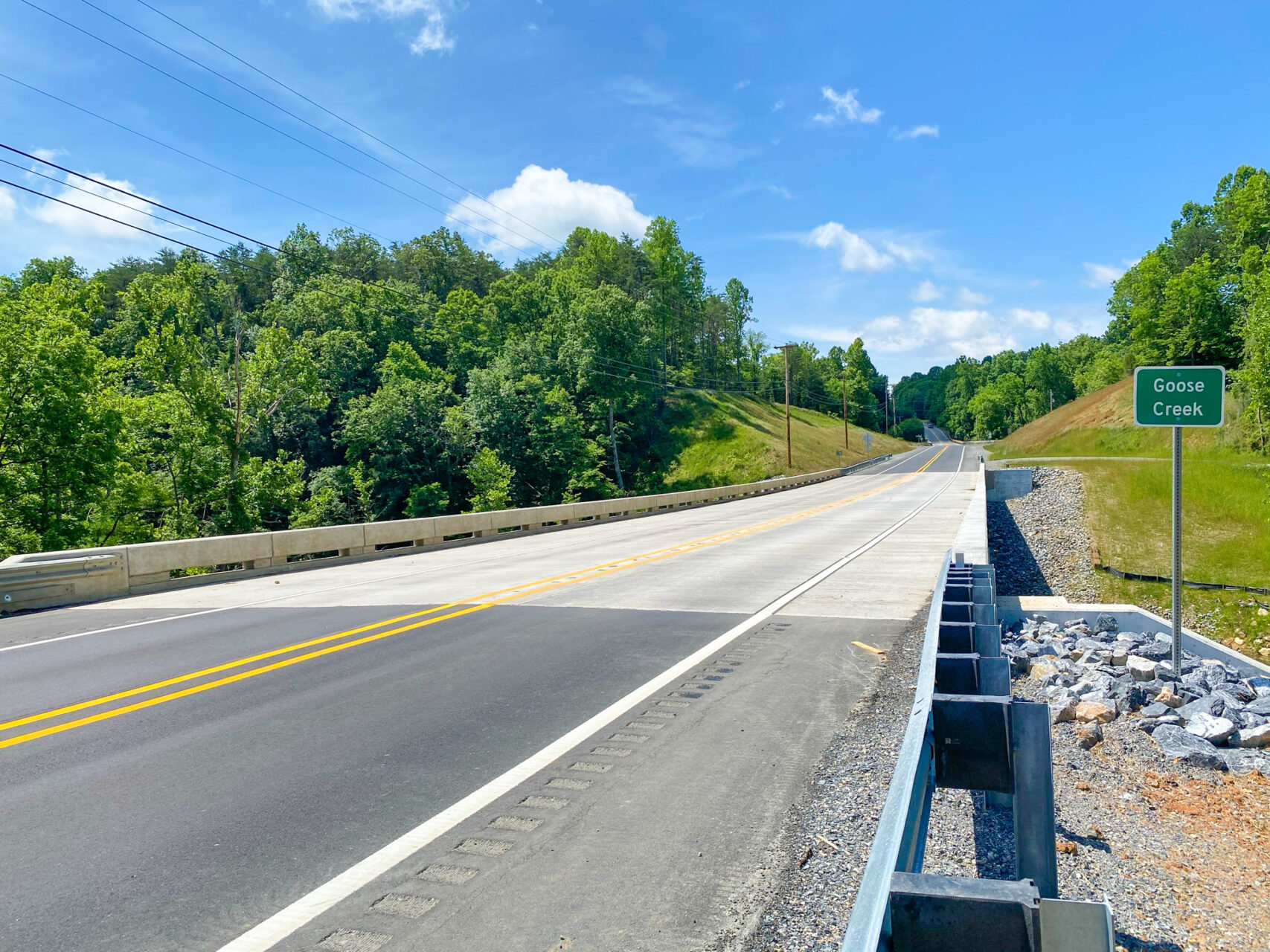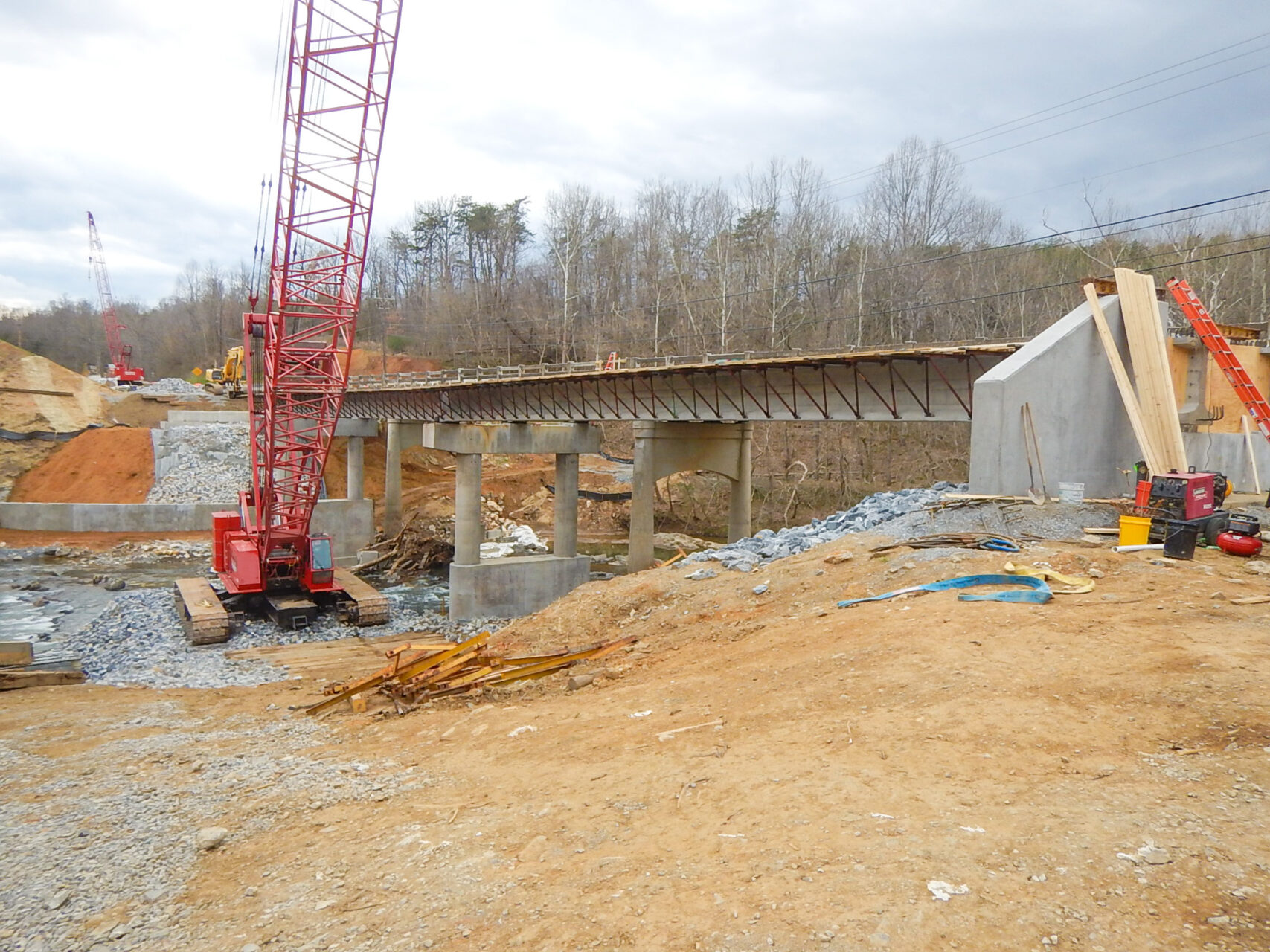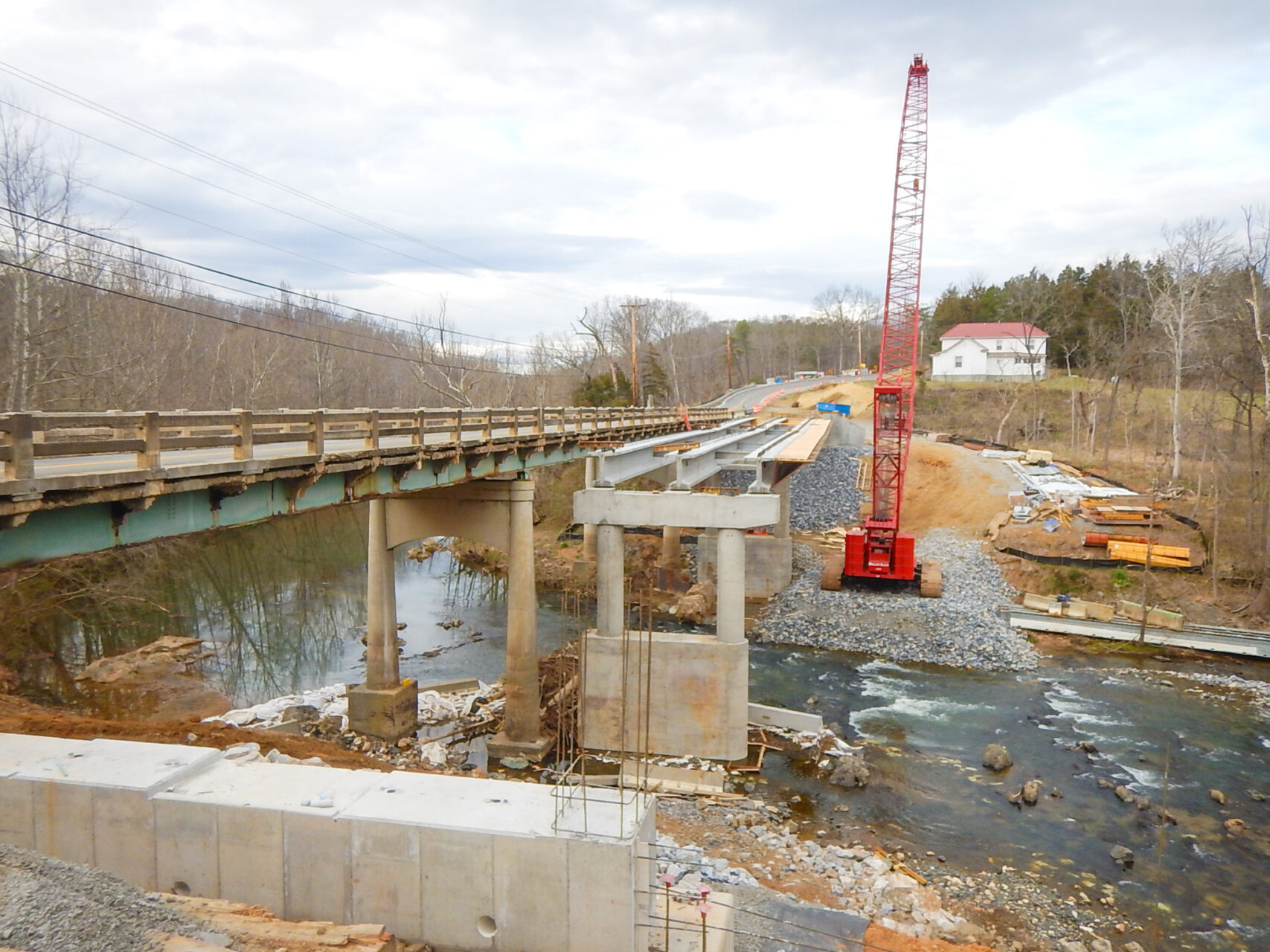Clark Nexsen was the prime consultant and lead designer on the replacement of the existing 280’ long multi-beam steel bridge on Route 122 over Goose Creek in Bedford County, Virginia. The project also provided improved geometrics for both bridge approaches. The existing approach roadway consisted of very sharp, nearly 90-degree curve with a rising grade of approximately 7%. Clark Nexsen was responsible for roadway design, bridge structural design, and traffic engineering design, as well as management of subconsultants performing geotechnical investigation and hydraulic design, including hydrologic and stormwater management (SWM) analysis.
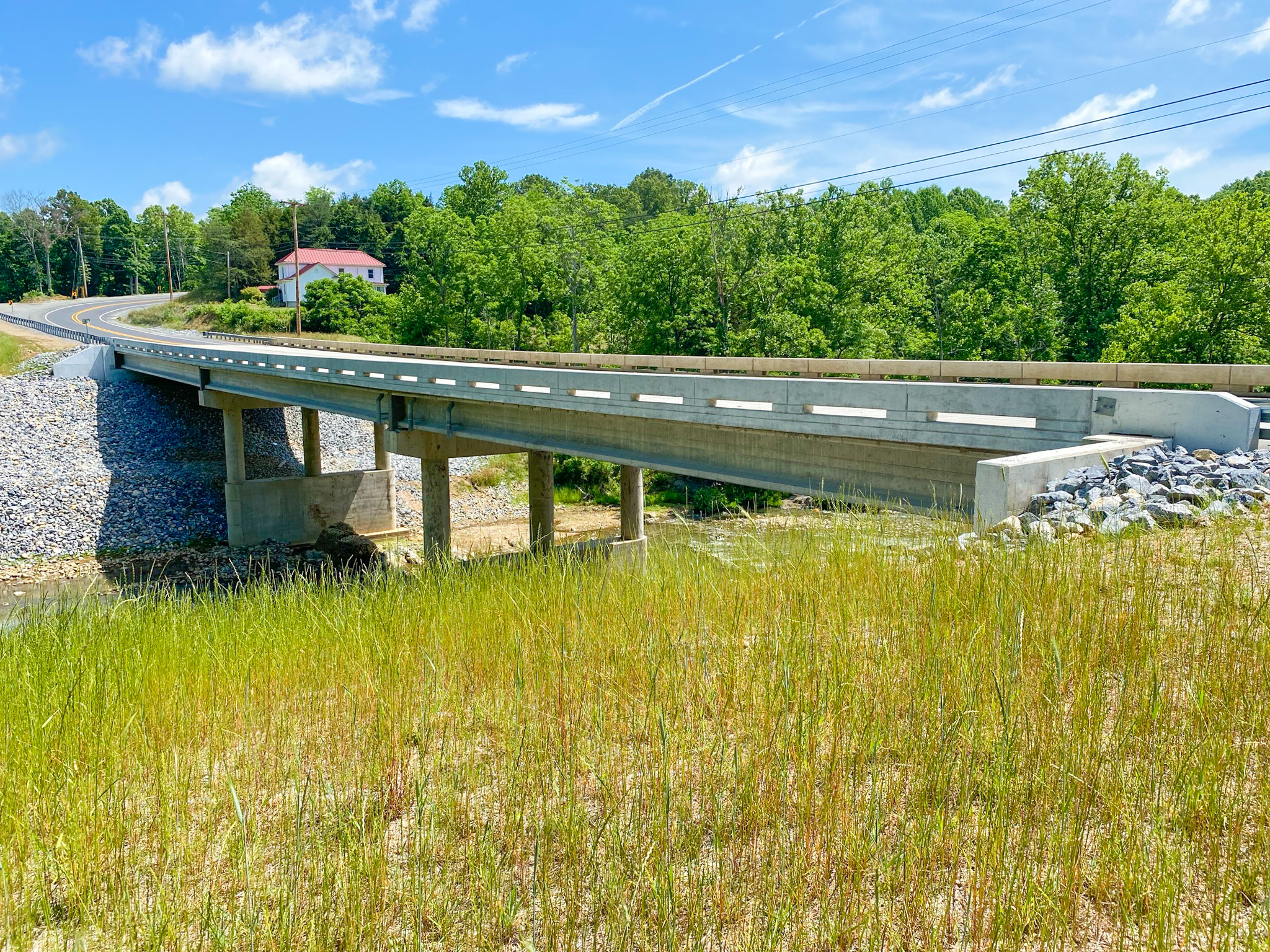 Design. Clark Nexsen performed an alternate study, considering different superstructure types (prestressed concrete versus structural steel) and various configurations ranging from a two-span layout to a three-span layout. Schemes with piers located at or near the edges of the creek were evaluated to minimize environmental impacts. However, the superstructure members required to achieve such a long span were not cost effective and would inhibit site delivery for long girders. The recommended alternative was a three span (96’-96’-96’) continuous prestressed concrete Bulb-Tee superstructure supported by semi-integral pile-supported abutments and two 32’ high multi-column piers supported by spread footings on bedrock in the channel. The shorter spans with 53” deep PCBT girders and 9” thick deck provided more flexibility in shipping and erection, resulting in considerable savings in initial construction cost.
Design. Clark Nexsen performed an alternate study, considering different superstructure types (prestressed concrete versus structural steel) and various configurations ranging from a two-span layout to a three-span layout. Schemes with piers located at or near the edges of the creek were evaluated to minimize environmental impacts. However, the superstructure members required to achieve such a long span were not cost effective and would inhibit site delivery for long girders. The recommended alternative was a three span (96’-96’-96’) continuous prestressed concrete Bulb-Tee superstructure supported by semi-integral pile-supported abutments and two 32’ high multi-column piers supported by spread footings on bedrock in the channel. The shorter spans with 53” deep PCBT girders and 9” thick deck provided more flexibility in shipping and erection, resulting in considerable savings in initial construction cost.
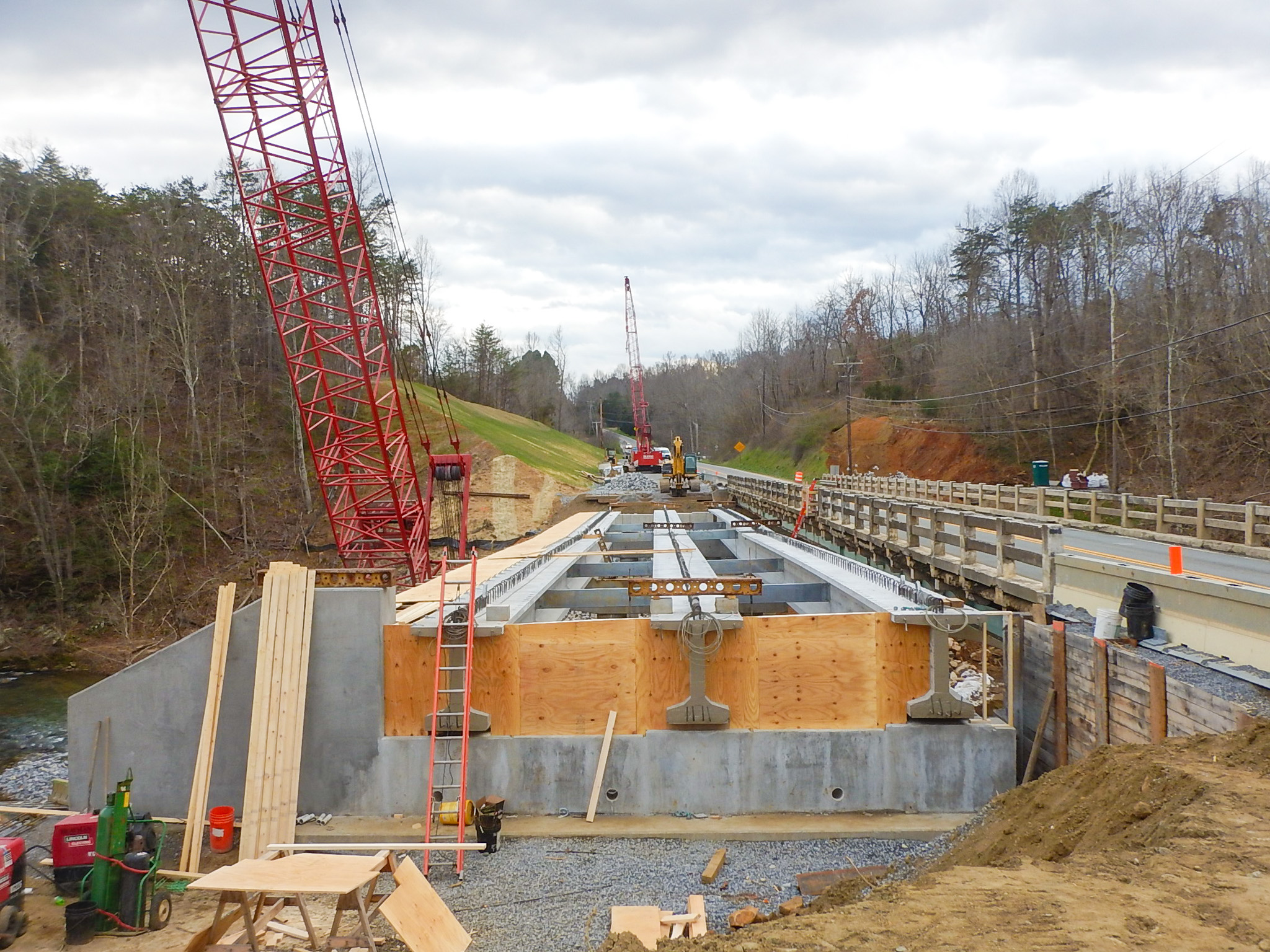 Constructability and Maintenance of Traffic Considerations. This project required two lanes of traffic to remain open throughout construction, therefore two-staged construction was utilized due to the lack of available detour. The proposed alignment was shifted 15’ east of the existing bridge centerline to accommodate a two-lane structure while allowing for the existing bridge to remain in place to maintain two-way traffic during Stage I construction. Clearance between the existing and proposed structures was critical for the accommodation of deck reinforcement and temporary shoring at approaches. Additionally, care was taken to ensure the structural integrity of the existing structure throughout construction, such as during pile driving operations at the new abutments. Upon completion of Stage I, the remainder of the new bridge was constructed in the footprint of the existing bridge, providing two 12’ travel lanes and two 9’ shoulders. Another major concern regarding constructability involved the construction access required to concurrently demolish the existing structure, construct piers, and install the superstructure. A temporary work trestle was required for each phase in order to provide access for construction equipment along the steep slopes of the existing channel; this was considered for the environmental permitting process to ensure that impacts on the waterway were minimized.
Constructability and Maintenance of Traffic Considerations. This project required two lanes of traffic to remain open throughout construction, therefore two-staged construction was utilized due to the lack of available detour. The proposed alignment was shifted 15’ east of the existing bridge centerline to accommodate a two-lane structure while allowing for the existing bridge to remain in place to maintain two-way traffic during Stage I construction. Clearance between the existing and proposed structures was critical for the accommodation of deck reinforcement and temporary shoring at approaches. Additionally, care was taken to ensure the structural integrity of the existing structure throughout construction, such as during pile driving operations at the new abutments. Upon completion of Stage I, the remainder of the new bridge was constructed in the footprint of the existing bridge, providing two 12’ travel lanes and two 9’ shoulders. Another major concern regarding constructability involved the construction access required to concurrently demolish the existing structure, construct piers, and install the superstructure. A temporary work trestle was required for each phase in order to provide access for construction equipment along the steep slopes of the existing channel; this was considered for the environmental permitting process to ensure that impacts on the waterway were minimized.
Challenges Overcome. One of the key challenges on the project was defining the scope and limits of the proposed project improvements. Clark Nexsen developed several alignment alternatives for this Salem District VDOT project. The purpose of the alignment alternatives development was to eliminate the severely substandard curve north of the Goose Creek Bridge, while replacing the existing structurally deficient and obsolete bridge structure over the existing creek. Significant analysis was required to provide a best fit design that met the horizontal and vertical design requirements for a 60-mph design speed, while avoiding significant cut and fills in the surrounding mountainous terrain. Ultimately VDOT elected to replace the bridge on existing alignment due to budgetary constraints on the project.
